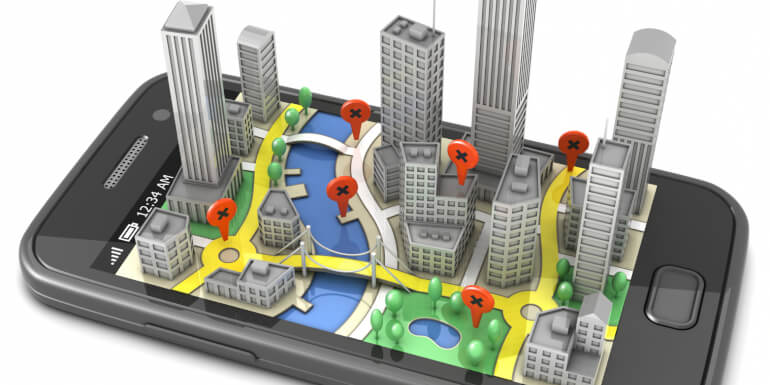How geofencing is helping businesses retain customers
Location-based marketing is getting much cooler as more companies are embracing geo-fencing to help draw customers into brick-and-mortar stores. Geo-fencing is a location-based technology that allows businesses to set-up virtual zones around a given location for the purpose of targeting marketing efforts at customers who have opted-in to receive correspondences from the business.

What is geo-fencing, and what is it used for?
Geo-fencing works by detecting a person (usually a subscriber to a service) as he or she moves through a virtual geographic boundary, enabling the software to trigger a response when a mobile device enters or leaves a particular area and sending them a promotional message in real-time.
While ambitious companies are already implementing the technology in their campaigns, the rules are still being written.
What we do know is that consumers should be allowed to opt-in for the service at will, independently of other digital marketing channels they might like to receive.
The best practices are to limit the number of text "alerts" that a subscriber receives when in proximity to a retail location. One alert per day is probably a safe limit that won’t make your customers feel spammed.
But the big question in my mind is, is it better to alert the approaching customer by making an offer, or is it better to make an offer to a leaving customer the vicinity?
What's in it for shoppers?
In light of the fact that you really only get one shot at gaining conversion from a shopper in proximity to your location, the smart move is to make it worthwhile to anyone passing by.
Anyone who has opted-in for your geo-fencing channel already wants to shop with you, so tailoring the offers to reach any customer - rather than an egressing customer - is the way to go.
The interesting part is that geo-fencing owes its origins to the need to keep track of employees and assets in mission-critical operations, like hospitals.
Using the GPS satellites, geo-fencing hinges on being able to pinpoint accurately where someone or something is. In our case as marketing pros, that something is your customer base.
Retaining customers is key
Any shopper who has opted-into your marketing program will expect to be reminded of your physical store whenever they are travelling nearby.
For this reason, not only can geofencing help you retain repeat business, but the technology can also factor into your overall CRM program, allowing you to assess and respond to customers in proximity to your brick-and-mortar stores.
The standard method of using geo-fencing is simply a text message. Since text is compatible with virtually all mobile phones, without the need to download anything, it is a no-brainer that text would be the primary method of alerting shoppers with geo-fencing.
Right now, though, companies are beginning to implement geofencing in either of two new ways. The first method is to integrate geofencing into a dedicated mobile shopping app for your store. This approach can work well, especially if you can update an existing shopping app to make use of geo-fencing.
The other option for using geofencing is to enlist the services of a third-party company, like Placecast. Such companies have the technological infrastructure already in place to promote your business for you, through geo-fencing.
Final thoughts
Geo-fencing is everything digital age is supposed to be.
The concept fits right into the trend toward localised shopping aided by technology. Geo-fencing ups the ante on the level of connectivity a brand can engage in with shoppers on the move.
We have long been able to urge shoppers at will to visit our stores, but geo-fencing can address those who are already near your location, which is half the battle.
Coupled with great offers and enticing content designed to speak to your clientèle, geofencing seems to be an emerging marketing channel filled with promise that we, as digital marketers are wise to start planning for.





